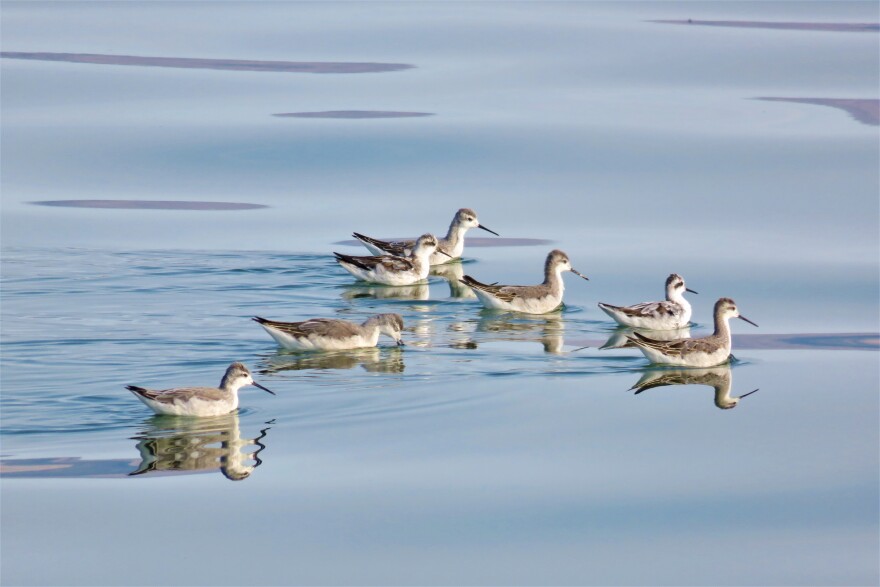A petition was put forward at the end of March to have the bird Wilson’s Phalarope, a key player in Great Salt Lake’s ecosystem, listed under the Endangered Species Act.
“The birds are, you know, really primarily in the south arm of Great Salt Lake feeding on the shrimp and the brine flies, phalaropes, they really specialize on the brine flies and the fly larva.” Jaimi Butler is co-creator of Great Salt Lake Institute at Westminster University and has been studying the lake for over 25 years.
“And those flies in the fly larva are really concentrated around these microbial organisms called microbialites, that are these mats of microbes that change the chemistry of the water,” explained Butler.
Great Salt Lake is a crucial fuel stop for the bird as it makes its way from breeding grounds across the western United States and Canada to its overwintering grounds in high Andean saline lakes, where they feed on the same species of brine flies. An avian ecologist with Sageland Collaborative, Emily Clark, is helping organize the upcoming biannual shorebird survey on April 26.
“[Wilson's Phalarope have] have adapted over 1000s of years to specialize in these saline lake habitats, because they have this abundance of food availability, that comes up at the time that they need in order to migrate. When the lake is in good health, when the salinity is the right levels, they're [brine shrimp and brine flies] going to emerge in the millions. And this provides [Wilson's Phalarope] this food source that's high in protein and fat that the birds need to be able to double their body weight, able to make these journeys,” Clark said.
Research is looking further into more exact flight paths and other potential stopping points along the migratory path, but so far the species has been found to mostly utilize inland saline lake areas.
The Center for Biological Diversity, other groups, and individuals including author Terry Tempest Williams and BYU associate professor Benjamin Abbot have petitioned the U.S. Fish and Wildlife Service to list the species as threatened, under the Endangered Species Act. While the process to get a species listed is long and arduous, many Utah stakeholders are concerned about the implications this could have for the Great Salt Lake ecosystem as a whole.
Essentially as a listed species, regulatory mechanisms to protect Wilson’s phalarope would be put into place and impact the rest of the highly interconnected lake ecosystem.
“Having those discussions of like, what a regulatory mechanism are, I think those are all like, just really, really important. And we need those right, we need those endpoints of like, what are we willing to accept happening to Great Salt Lake,” Butler added.
There is, however, potential for a collaborative effort between the U.S. Fish and Wildlife Service and the State of Utah.
For more information on what the petition could mean see University of Utah’s S.J. Quinney College of Law piece, “Understanding the petition to list the Wilson’s phalarope.”



